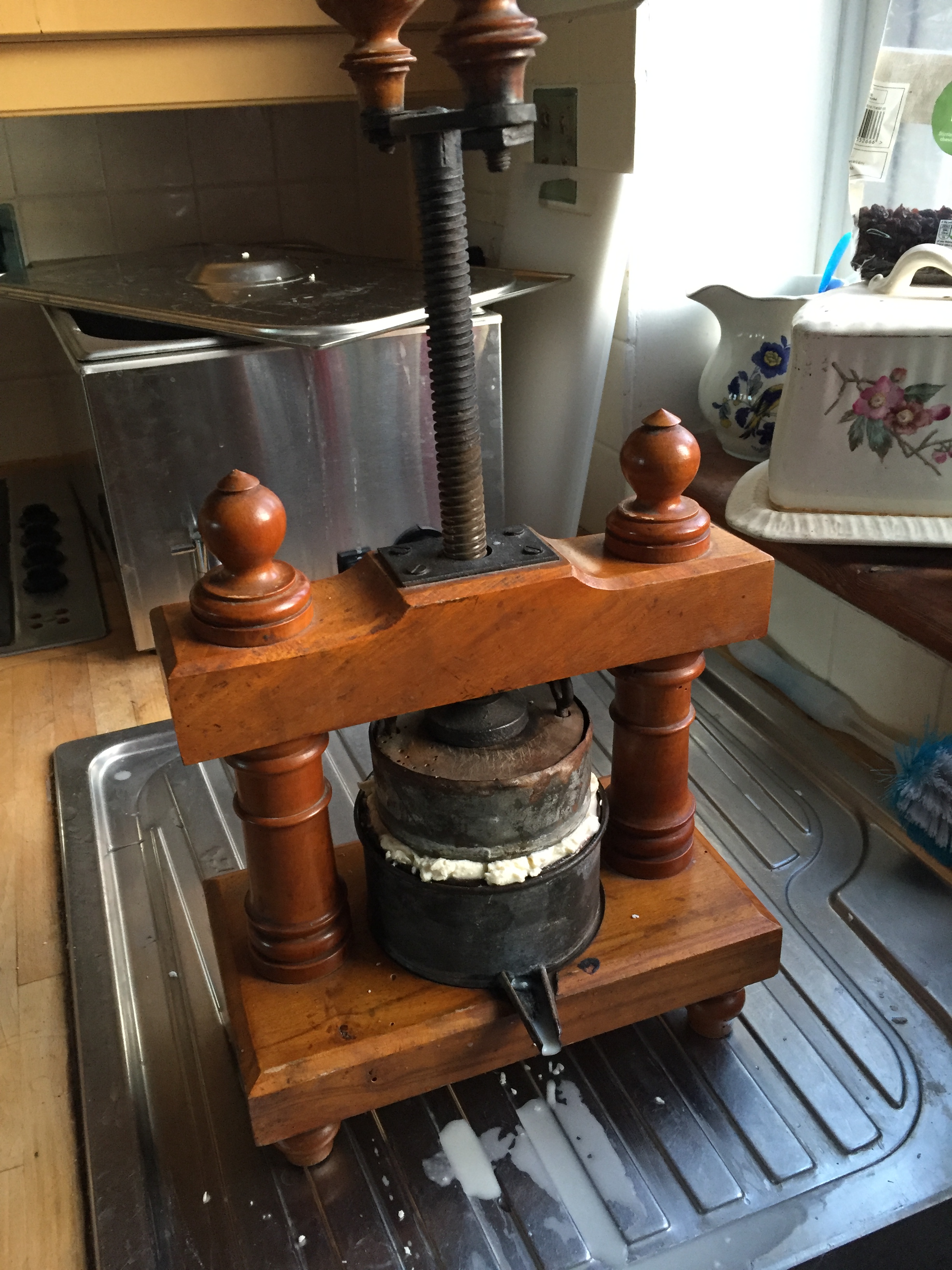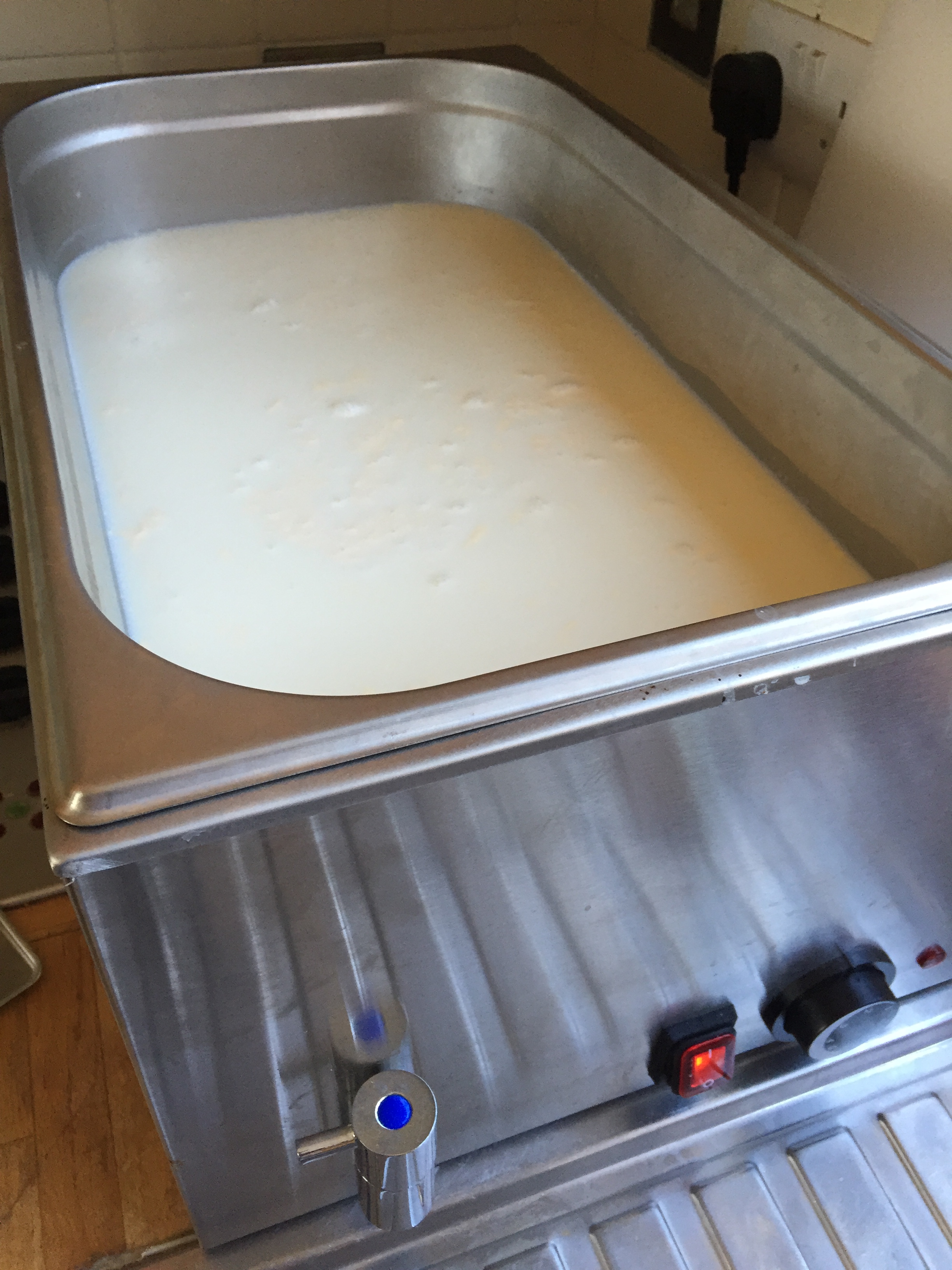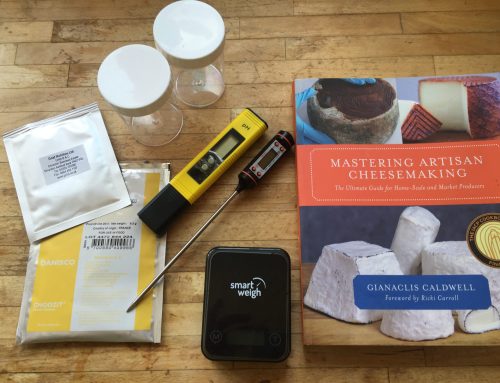
I’m trying something a little different today. I’ve got my hands on an old French cheese press that my father picked up from a brocante in the Luberon. It’s a beautiful object and I’ve got to see how well it works.
It has to be admitted that by modern standards it’s simply not food grade – and I suspect my local Environmental Health Officer would have conniptions if I proposed to use it to make cheese for public consumption. For starters, the mould and follower (for pressing the cheese) are made of a defiantly non-stainless steel – and the acid in the cheese has, over many years, caused some corrosion. Rest assured, Doug, this is simply an historical experiment – it’s definitely NOT for human consumption.
Based on where the press was found, I’m guessing that this press would once have been used to make something like a Tomme des Pyrénées or a Tomette des Alpes. Arguably it could have been used for making small Mimolettes (a fascinating cheese because cheese mites are deliberately encouraged to nibble on the surface of the cheese to enhance the flavour). However, Mimolette is made around Lille in the north of the country so on balance I think the press is unlikely to have been used for this.
The other factor is the size of the mould within the press. It has a uniform height which you’d expect for a pressed cheese (soft cheese moulds are often wider at the top) but it is only 5cm deep with a diameter of 10cm. By contrast, the little moulds I use for making mini Cheddars has a diameter of 9cm and a depth of 8cm – while traditional Cheddar truckles are taller than they are wide. It’s a strange size but there is a mould in the Coquard catalogue for a 300gm baby Gouda that is not a million miles off (9.6cm diameter and 6.5cm height). Besides, at the time this press was made there would have been little standardisation and a lot of regional variation, even from village to village.
The point, however, is that this is going to be small for a pressed cheese and consequently, it will mature much more quickly than, say a 2kg truckle of cheddar. The fact that it will be wider than it is tall will also have an effect on the process.
I don’t have a recipe for Tomette to hand so I’m making a standard Cheddar recipe. 8 litres of milk are heated to 32˚C in my bain marie and off we go.


